Did you know that there exists a temple in India, where no one has ever seen the deity? A highly revered place, where the ‘deity’ always remains covered!

Situated approximately 40 kilometres away from our cottages lies the quaint town of Devi-Dhura. This charming town is renowned for its enchanting cave temple devoted to the revered deity Maa Barahi, also known as Maa Varahi. Moreover, it holds fame for hosting the vibrant Bagwal Mela, a grand fair that takes place during the joyous festival of Raksha-Bandhan.
The temple complex itself encompasses not only an ancient cave temple but also several newly constructed temples scattered throughout its surroundings. The amalgamation of the religion and mystery surrounding the temple adds to the spiritual ambience of the sacred site.
Click here to directly go to the end of the page and read about – Maa Barahi , Bagwal Mela
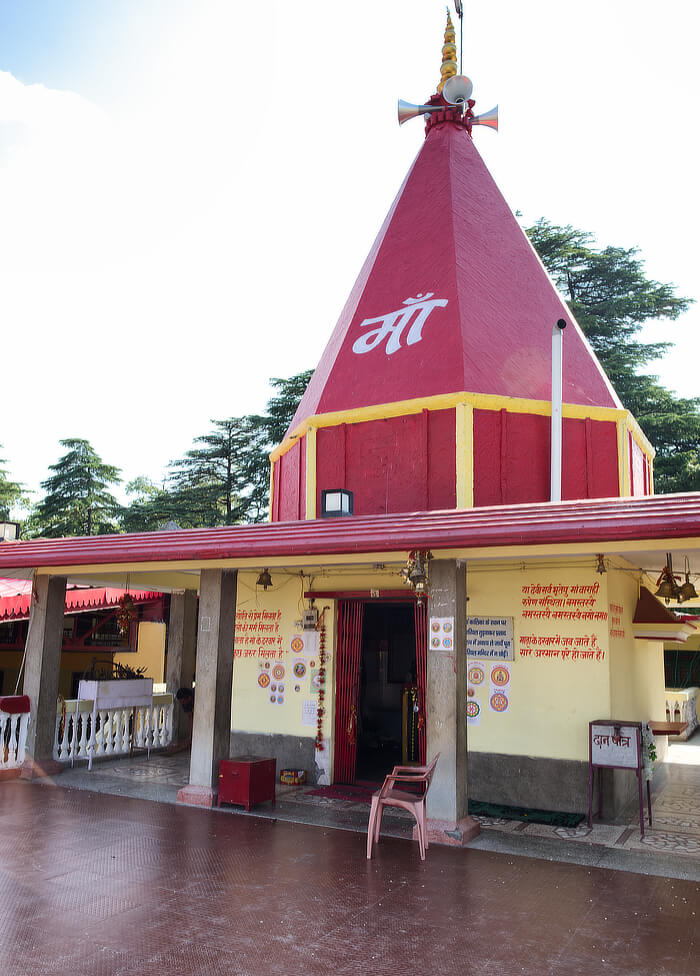
The new temple is located near the entrance. It is a modern structure and overlooks the Bagwal Mela ground in front.
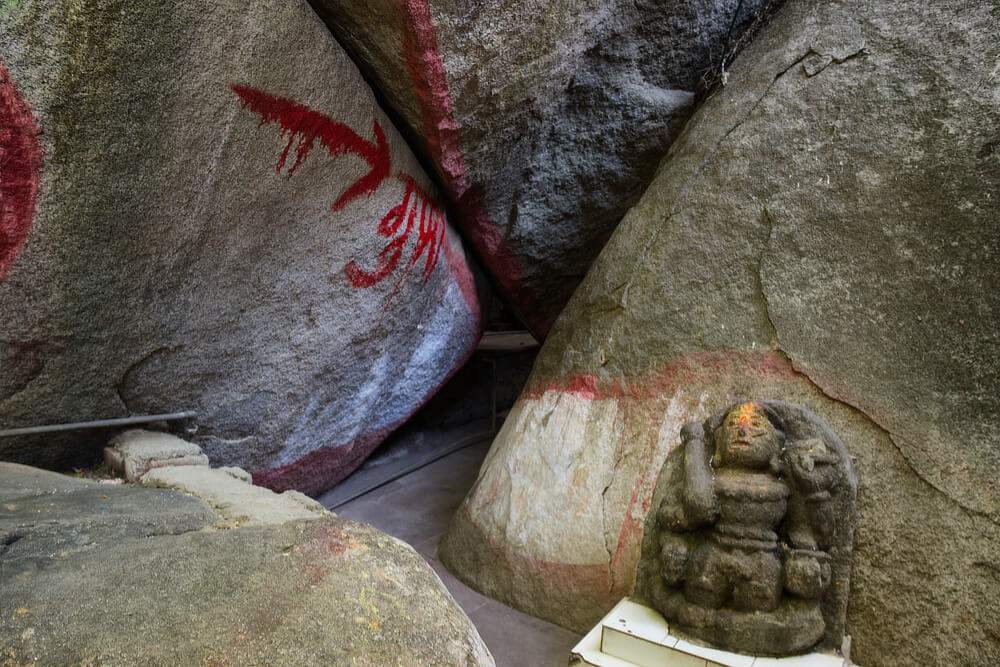
The old temple is situated between a few huge rocks. To reach the temple, one has to slide through the narrow openings between these rocks. Some of the walls have been painted indicating where exactly to go.
The cave temple holds great significance due to its unique features. The ghee offerings within the temple permeate through the rocks and emerge on one side of a large rock. This sacred manifestation is revered as the divine feet of Devi, and pilgrims who visit the temple bow before these sacred spots to seek blessings. To aid visitors in identifying these spots, they are now marked with paint.
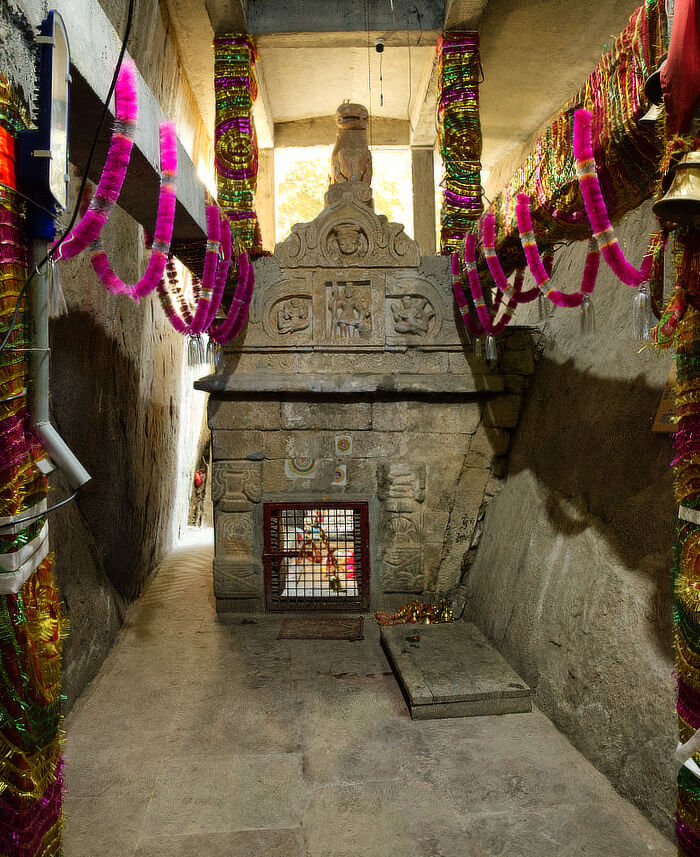
The temple itself is an ancient structure built between these rocks. However, some reinforcement has been done using modern construction methods.
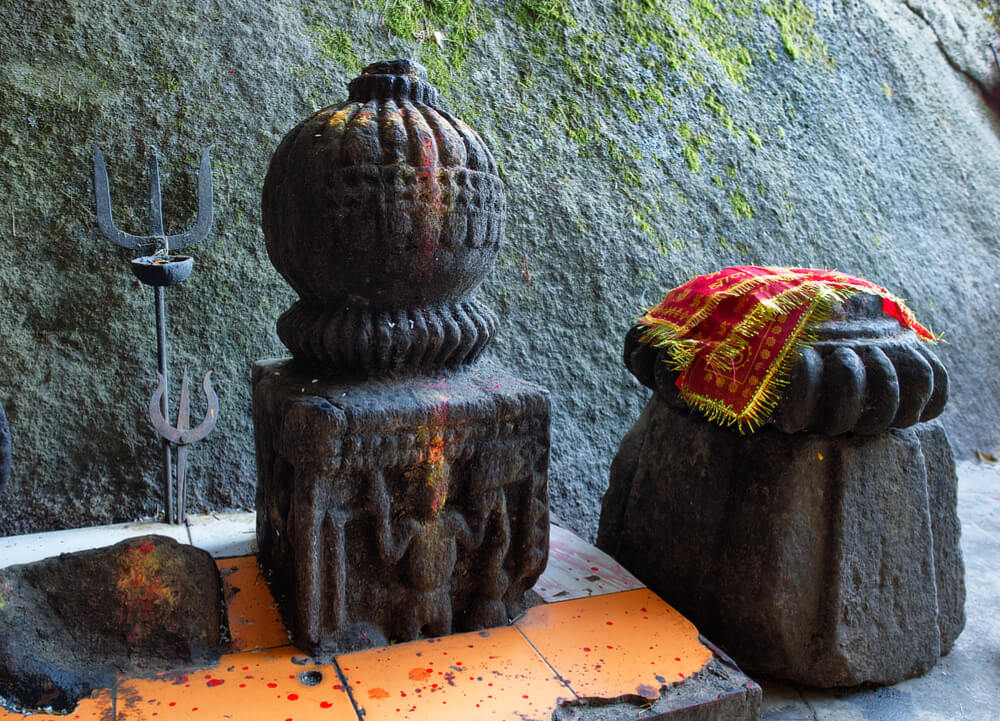

As per local beliefs, in the initial days, the worship of Maa Barahi did not involve a physical statue. Devotees would offer their prayers to the revered shakti enshrined within a sacred copper trunk, as well as to the rock symbolizing the goddess herself.
The divine power of Maa Barahi is perpetually concealed within a beautifully adorned copper trunk (reminiscent of the legendary Pandora’s box, or the Golden Ark). Presently, this sacred artefact rests within a newly constructed temple located just outside the ancient cave. Visitors are respectfully prohibited from beholding the shakti with their unadorned gaze. However, once a year, the shakti is ceremoniously revealed to the public, yet devotees must cover their eyes.
Over time, during the reign of the Chand dynasty kings, a statue of the goddess was installed at the sacred site. Subsequently, devotees began to direct their prayers towards the divine form embodied in the statue, along with the veneration of the shakti contained within the copper trunk.
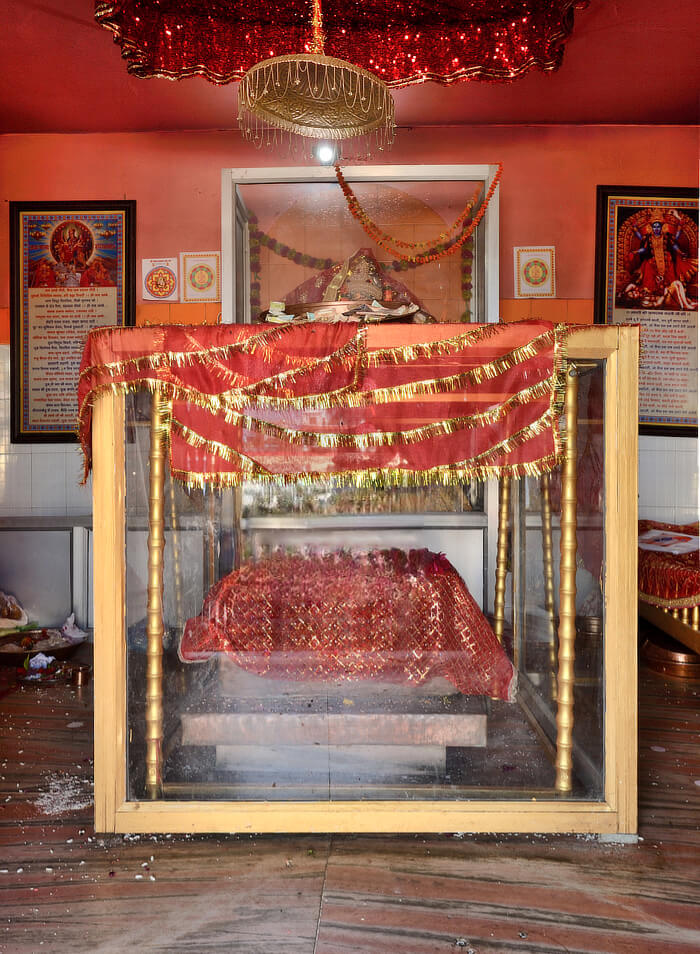
There are some other places of importance too in the vicinity.
It is believed that the Bhim, one of the Pandavas used the giant boulders present at the temple’s premises as balls and had thrown them around. There’s a large rock, just a little distance away from the temple which is also said to have been split by Bhim in one sword strike.
It is also believed that some of the energy that was used in various magical ‘tantra’ rituals, is also buried deep in this rock.
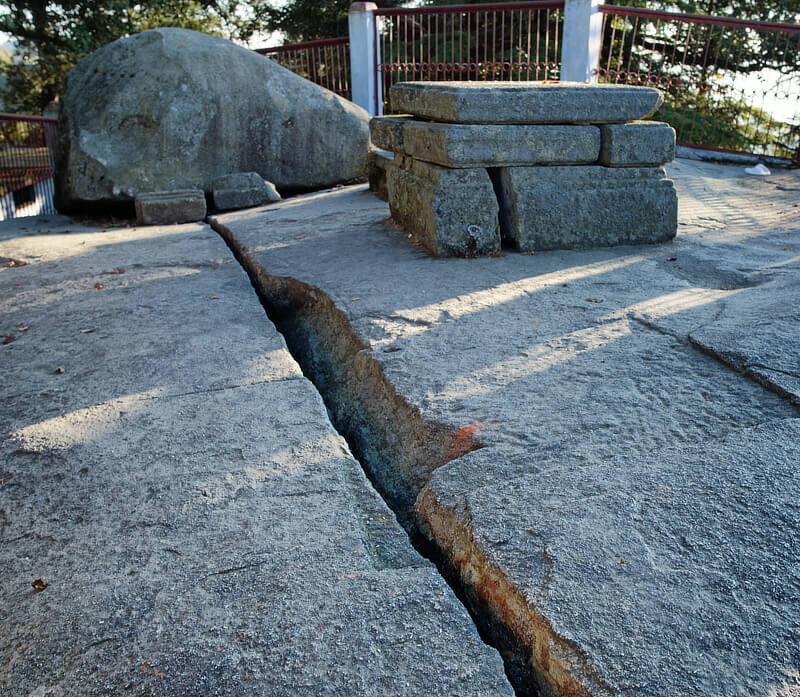
The famous author and hunter, Jim Corbett’s tale ‘Temple Tiger’ is associated with the Devidhura temples also.
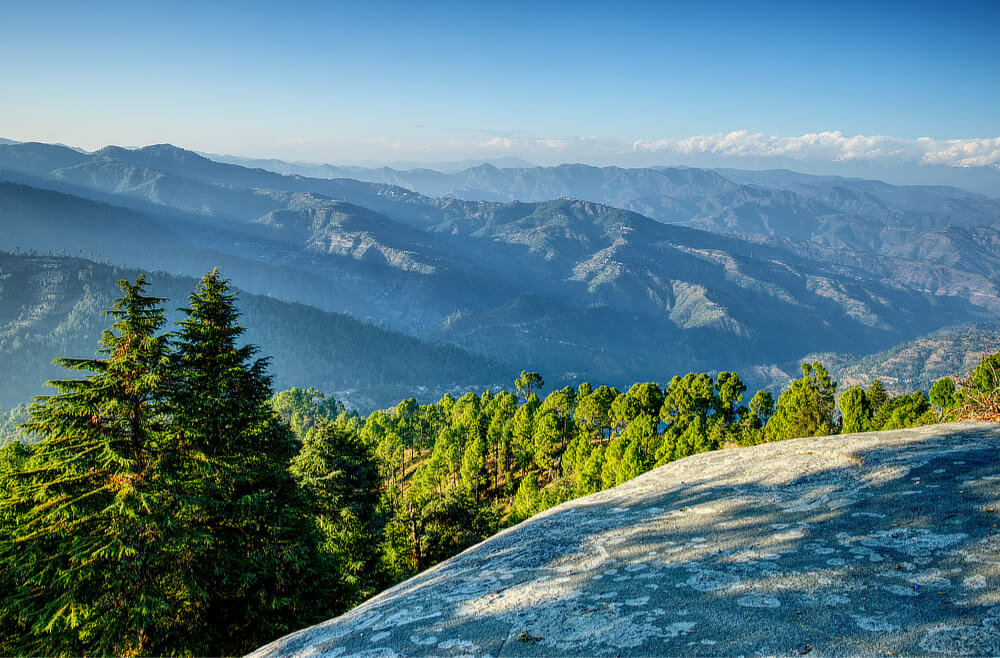
Devidhura, is situated amidst a pristine forest of majestic deodar and oak trees, is a haven of beautiful native flora and fauna. To reach the temple, one embarks on a picturesque journey through breathtaking forests, adorned with verdant trees and delightful orchards.
The view from Devi Dhura, of the mountains and the gorgeous valleys in front, is also a sight to behold.
Story of Devi Dhura Temple
The Vedic literature, including the Puranas, mentions the divine power of Lord Vishnu’s Varaha avatar as Maa Barahi. According to the Devi Bhagavat and Markandeya Purana, during the battle between Maa Durga and the demon Raktbeej in this region, Lord Brahma and various demigods bestowed their powers upon Maa Durga. The Varaha avatar of Lord Vishnu also contributed his power, manifesting as Maa Barahi.
Maa Barahi holds profound reverence within the region, being hailed as one of the revered Matrikas, a group of seven divine mother goddesses. She embodies the dynamic feminine energy, known as shakti. She is the shakti of Baraha, the boar avatar of the Lord Vishnu.
It is believed that Maa Barahi continues to reside in this very location. However, her energy is so intense that it cannot be perceived by the naked eye. Hence, the source of her energy is kept concealed within a copper trunk. Once a year, the covering is removed, but devotees are required to shield their eyes due to the overwhelming energy.
Story of Bagwal Mela
According to folklore, there is a tale of an annual ritual involving the sacrifice of a chosen man on the goddess’ altar to appease her. The selection process involved individuals from four clans – Garhwal, Lamgariya, Chamyal, and Valik. On a particular occasion, it was the turn of a young man who happened to be the sole support for his elderly grandmother. Despite her heavy heart, the old lady accepted the fate willingly. The King of the region, moved by the grandmother’s unwavering devotion, granted her grandson a new lease on life. However, in return, an equivalent amount of blood was to be offered from a group of people. This gave rise to the tradition of “snow-pelting.”
Each year, on the day of Raksha Bandhan, people now engage in a symbolic act of pelting stones at each other, with blood flowing on the temple grounds. Remarkably, these wounds heal by the next day. The villagers show their support to their representatives with music and drums, while wooden umbrellas known as ferra are used as shields. Nowadays, the tradition has evolved, and stones and pebbles have been replaced by flowers and fruits. However, a small amount of blood still trickles from the wounds, keeping a connection to the ancient practice.
